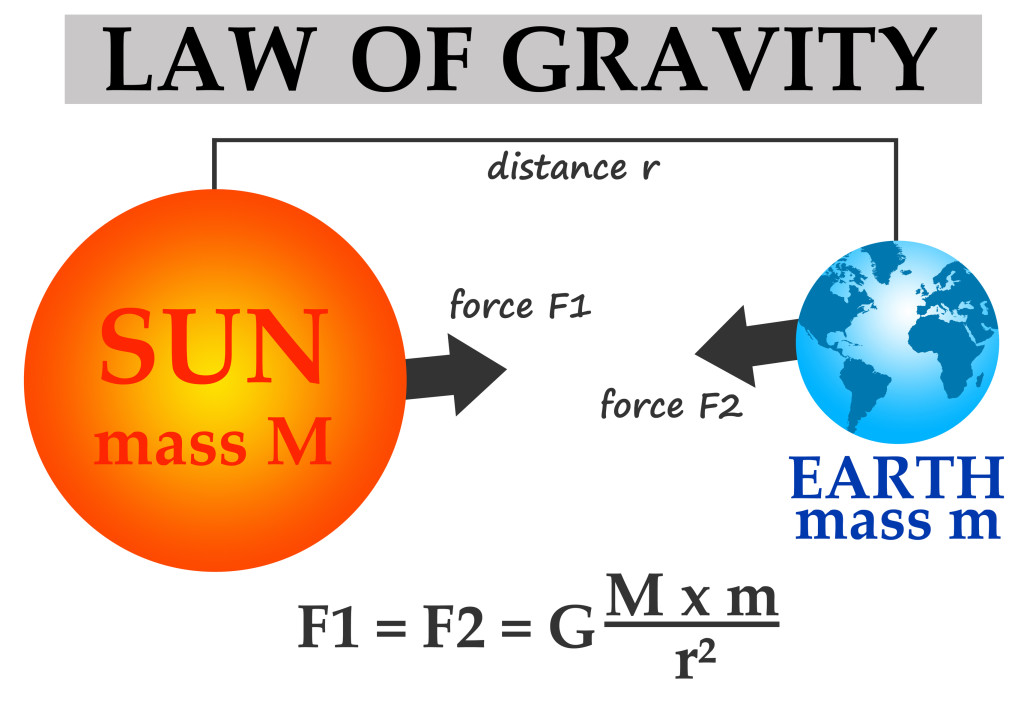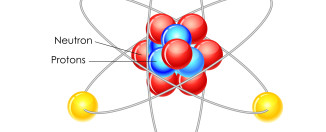The Law of Gravity
 Newton’s famous Law of Universal Gravitation, also known simply as the Law of Gravity, is stated as:
Newton’s famous Law of Universal Gravitation, also known simply as the Law of Gravity, is stated as:
F1 = F2 = G (M x m / r2)
It sure is a pretty equation, but what does it mean!? Let’s look the different parts of the equation and then put it all together.
F1 and F2 – These are the forces of attraction between any two masses 1 and 2. The equation shows that the force (F1) attracting mass 1 to mass 2 is the same as the force (F2) attracting mass 2 to mass 1. Well, that seems easy enough, but how can me calculate the amount of that force?
M and m – We’re not talking about the rapper here, though he is still affected by the force of gravity. The big M represents the heavier of two objects, also called ‘masses’, while the small m represents the lighter of the two masses. These are also sometimes referred to as m1 and m2.
r2 –Letter r in the equation represents the distance between the center of the 2 masses. Now we’re getting somewhere!
G – Big G, as it is sometimes called, is the gravitational constant. Don’t be afraid! This simply is a number (6.673 x 10-11 N m2/kg2 in this case) that represents a set relationship between mass and force. In other words, no matter what the masses and how far apart they are, the force of gravity between them will always be measurable as a certain number of Newtons times their mass and divided by the square of their separation.
Putting it all together, the force of gravity pulling one object to another is always equal to the mass of the first object times the mass of the second object, divided by the square of their distance of separation, and then multiplied by the gravitational constant, Big G. It’s important to notice that the square of the distance of separation is used, so that as objects get further away, the force holding them together gets much smaller!








